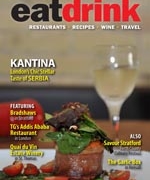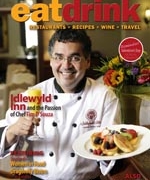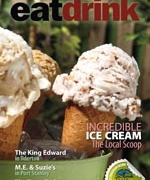Have Fruit, Will Travel
With summertime upon us, there are delectable local fruits on offer in markets and roadside fruit stands across Ontario, not to mention the extra helping of imported exotic fruits that line the grocery store shelves. But how many of us know the stories of adventure and commerce behind those pyramids of mangos and heaps of bananas? Or about the staggering cornucopia of outlandish fruits around the world that are not even represented on our grocery shelves? Who knew, for instance, there is such a specimen known as peanut butter fruit? Or a charichuela that tastes like lemonade-infused cotton candy? Or apples that tastes like cinnamon? This is only the tip of the iceberg of facts that crop up in Adam Leith Gollner’s book, The Fruit Hunters: A Story of Nature, Adventure, Commerce and Obsession.
Most of us are probably unaware of the astronomical assortment of fruit available and Gollner’s unquenchable desire for his topic is evident in the encyclopaedic tidbits of fruit trivia throughout his book. For instance, Japanese food researchers have designed square watermelons to better fit on refrigerator shelves. I also learned there are so many varieties of apples that one person could eat an apple a day for fifty-five years and never eat the same type twice. To that I can only say: How do you like them apples? In fact, the education in fruit diversity you get from Gollner’s writing is dizzying at times and it’s difficult to keep track of all the fruits that by name and description do not resemble anything in a typical grocery store. But his adventures are so entertaining that I forgive him for talking about sapodillas and rambutans as if I know what they are.
Gollner doesn’t stop with sampling fruit but also interviews dozens of quirky fruit experts and oddballs, such as fruitarians (people who only eat fruit) and people suffering from haptodysphoria (an irrational fear of fuzzy fruit). We meet a self-professed fruit detective who claims to turn orange after too many apricots, and fruit conservationists who oversee specimens on the brink of extinction in a UNESCO-protected World Heritage Site in the Seychelles.
Local fruits may be extra tasty in the summer, but Gollner has given us a whole new array to choose, even though it may be nearly impossible to taste these delicacies domestically. He writes: “Thousands of tantalizing fruits that never make it to North America or Europe are eaten everyday across the globe. Even if we knew they existed, importing fruits over borders is a process fraught with botanical, economic and geopolitical challenges. Complicating matters, most little-known fruits don’t produce abundant enough crops to merit shipping. They’re also only in season for a brief period. And with many fruits not cultivated on a mass scale, quality varies widely from tree to tree. All of which is exciting for fruit hunters, but anathema to supermarket supply chains” (74). There are organizations, such as the Rare Fruit Council International, that study unusual fruits and attempt to transplant seeds in North America by starting them out in Florida’s subtropical climate. As with any consumer goods crossing borders, there are strict laws to follow and when there are laws, there are smugglers, or in this case, fruitleggers, who illegally transport exotic fruits and seeds at the risk of jail time and hefty fines. Gollner’s solution is to travel to the countries that host these indigenous fruits to experience them in all their glory. He guarantees that every trip and every taste is well worth the effort.










